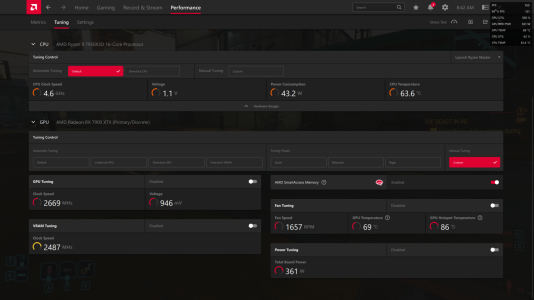LigTasm
Supreme [H]ardness
- Joined
- Jul 29, 2011
- Messages
- 6,639
My Sapphire 7900XTX Pulse has had a really big temp to hotspot delta since I bought it, out of the box it was like 84C/110C. I pulled the heatsink and found there was almost no paste on it and the corners weren't covered, so I repasted it. This dropped the hotspot to around 100C with core temps dropping 4-5C. Out of curiosity I picked up a Kryosheet, since its conductive I put kapton tape around the die and put the sheet on. This is what I'm getting now after running Cyberpunk 2077 for over an hour. My fans are now running at 1600rpm instead of 3000rpm, its fantastic.


![[H]ard|Forum](/styles/hardforum/xenforo/logo_dark.png)
